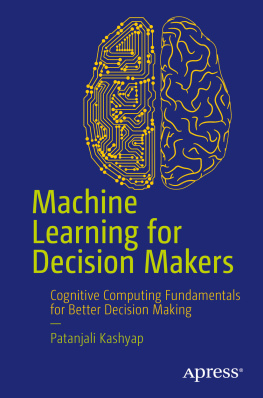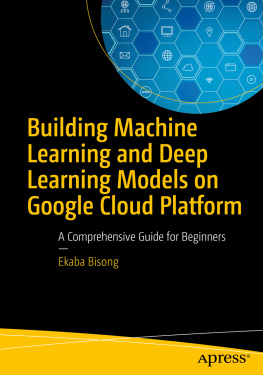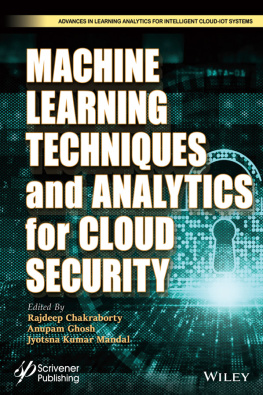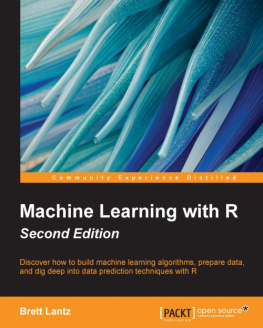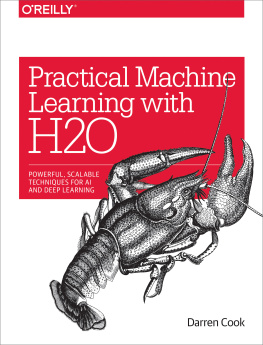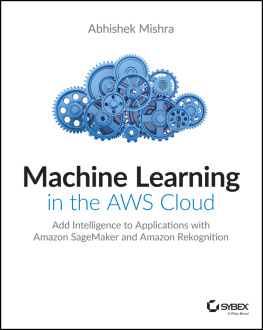In this chapter, I present a holistic synopsis of how machine learning works in conjunction with other technologies like IoT, Big Data analytics, and cloud and cognitive computing. Technically machine learning cannot and never should be understood in isolation. It is a multi-disciplinary subject. This is the reason why an integrative view of suite of concepts and technologies is required before going into the details of the machine learning technical landscape. Even for academic purposes, if someone wants to understand the working of machine learning, they have to learn the nuts and bolts in detail. Hence, it is natural for business leaders and managers to have a holistic and integrative understanding of machine learning to get hold on the subject. It becomes more important if they are interested in the subject for business reasons. As you have started reading this book, I assume that you want to get acquainted with the concepts of machine learning.
During my endeavor to provide a conceptual foundation of machine learning and its associated technology, I address multiple business questions, such as What is machine learning?, What is the business case for machine learning?, How do we use machine learning?, What are the key features of machine learning?, Where can we implement machine learning?, What are the major techniques/types used in machine learning?, and Why is machine learning required for business?
These questions are answered in detail in this or following chapters. Also, the key business benefits and values of successful machine learning implementations are discussed in the appropriate places.
Almost the same set of questions, thoughts, and concepts are addressed for the other associated technologies as well. This chapter explores the core concepts behind advanced analytics and discusses how they can be leveraged in a knowledge-driven cognitive environment. With the right level of advanced analytics, the system can gain deeper insights and predict outcomes in a more accurate and insightful manner for the business. Hence, it is essential to study them in a practical way. This chapter sets the knowledge platform and provides you that practical knowledge you are looking for.
Your Business, My Technology, and Our Interplay of Thoughts
My argument is very simple and you will find its reflection throughout the book. I argue that technologieslike the cloud, Big Data analytics, machine learning, and cognitive computingenable growth, profit, and revenue. My focus is not to explain this model and its benefit in stepwise fashion but to explain the technologies behind it.
In any business scenario, results or outcomes have multiple dimensions. But what is important for the enterprises, business leaders, and stakeholders is to know how it impacts their business strategies. The outcome depends on multiple factors, such as how quickly the infrastructure is ready, the cost per transition, the implementation time for the new applications, and even how partners including suppliers are integrated in the overall supply chain and decision making. Other important factor is the level of automation the enterprise has (from bottom to top).
Machine learning or, in other words automation of automation, and cognitive computing are changing the way decisions are made. Monotonous, repeated and less skilled human intervention is being replaced with intelligent automation and thats changing the dynamics of decision making. However, the result of this is coming in the positive way and increasing the efficiency and effectiveness of overall business process and decision making. Its impact will be felt on enterprise profit, revenue growth, and operational efficiency. Enterprises will get business value at all levels and areas of their investments, whether its IT infrastructure, IT application, business process, operations, or finance. If they adopt the right context-based approach to technology adoption, benefits are bound to come.
Adoption of the cloud empowers companies with quick provisioning of the resources and reduced cost per transition and workstation. Most of the requirements for application development are available on-demand in a cloud-based environment, so implementing a new application is fast. Suppliers have availability and access to the robust supply chain, hence integrating their services and logistics becomes easy. The cloud provides on-demand data analytics and machine learning-based context-oriented cognitive computing functionalities in an automated fashion. This enables enterprises to enjoy high revenue growth and increased return on investment.
If we follow the trends and direction of the IT industry from last couple of years, one signal is very clearly coming out thatindustries are betting heavily on the new generation of technologies. Old thoughts and technical pillars are getting destroyed and the new ones are piling up rapidly. IBM, Microsoft, Google, and Facebook patents filled in recent years show the direction of the industry. Microsoft is the leader in patent filing, with over 200 artificial intelligence related patent applications since 2009. Google is in second place with over 150 patent filings. Patents include elements of cloud computing, cognitive computing, Big Data analytics, and machine learning. The following links provide a snapshot of the patent landscape in recent years.
The cloud , the Internet of Things (IoT) , Big Data , and analytics enable effective and appropriate machine learning implementation and focused strategies. Machine learning is at the core of cognitive computing, which provides the power of real-time evidence-based automated decision making capabilities to enterprises. You will get the pointed knowledge in desired steps and be able to combine all the pieces together to visualize the complete picture. Actually, this is a journey from data to wisdom. You get data through IoT systems and other sources of data, store that data in a cloud-based data store, and then apply analytics techniques on it to make sense out of it. Then you automate the analytical process by applying machine learning techniques to find patterns and make accurate predictions for getting better business results. You refine the results by iterative run of the models/algorithms. The options are backed by a confidence level and evidence of suggestions. An end to end solution!
It is worth mentioning here that this separation of technology and division of layers is logical, i.e. there is no hard boundary defined in the standard and professional literature. For example, a lot of technical literature couple Big Data analytics and machine learning together. Some treat machine learning and cognitive computing as one. However, segregation gives neatness to the thought process, hence I take this approach.
By studying the five technical pillars of current and future innovative and knowledge-based business ecosystem (the cloud, Big Data, IoT, machine learning, and cognitive computing), you will be able to draw correct inferences and make suitable business strategies and decisions for your enterprises. By the end of the chapter, you will understand what these technologies are all about, what they mean, and how they matter to the business ecosystem.

